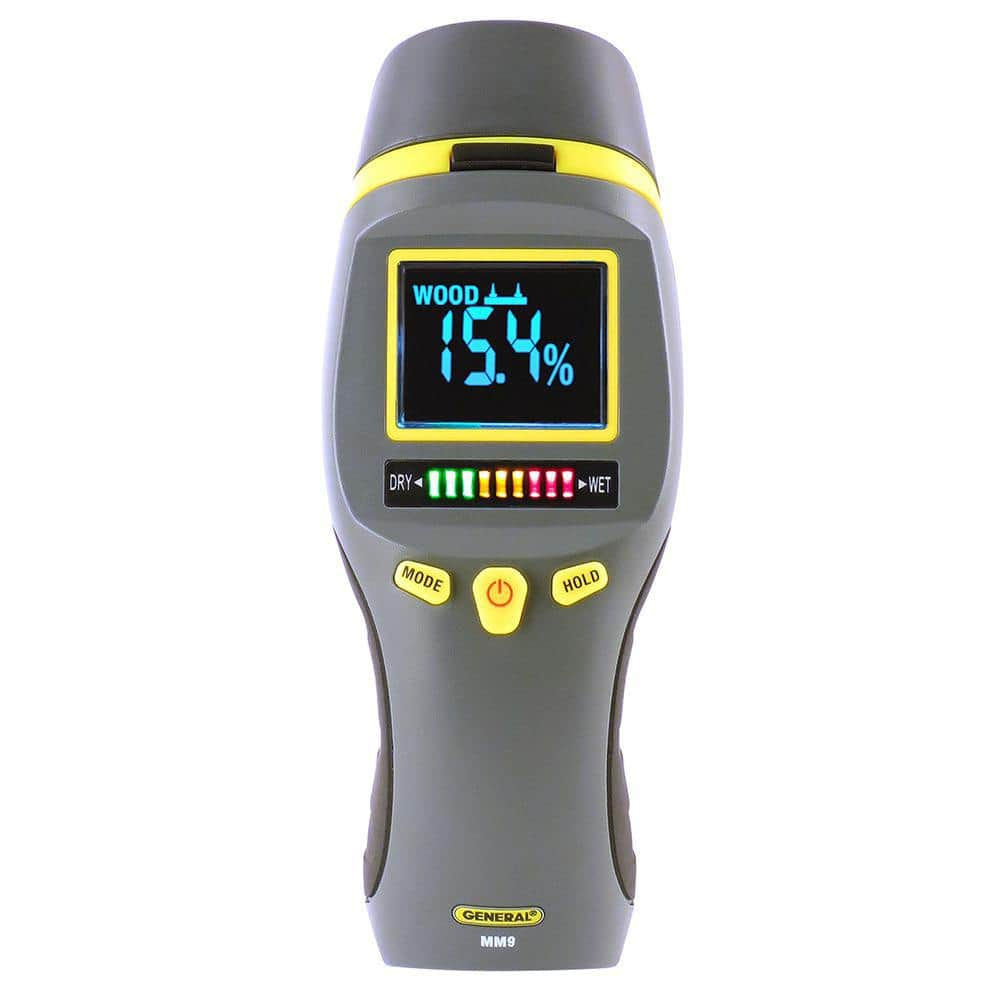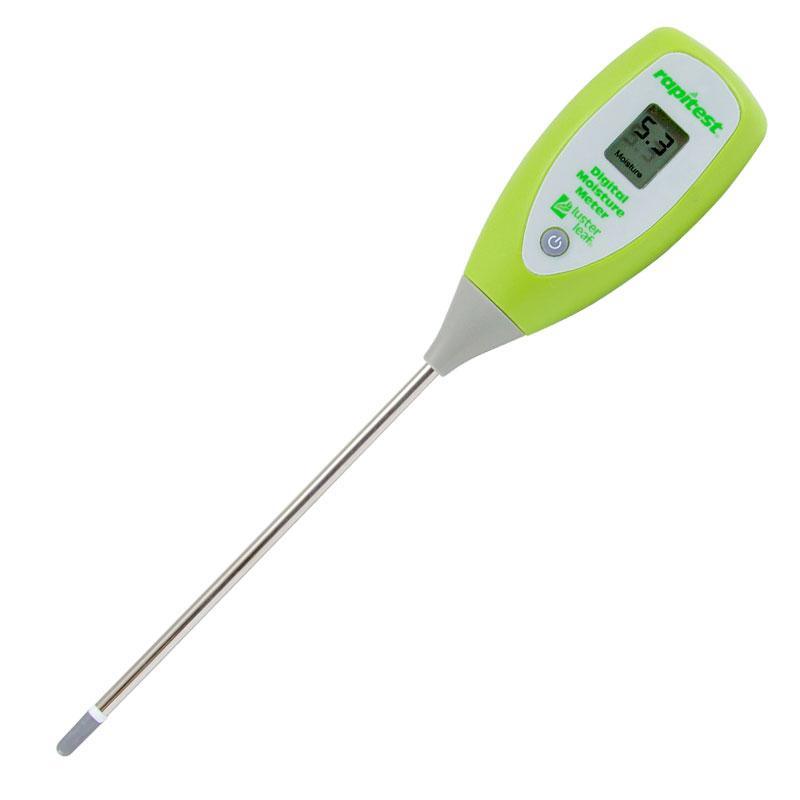Recognizing the Significance of a Moisture Meter in Stopping Mold And Mildew and Water Damage in your house
In the world of home upkeep, the visibility of dampness can frequently be a quiet yet formidable opponent, capable of causing prevalent mold and mildew growth and dangerous water damages if left unchecked. Recognizing the value of a dampness meter in this battle is not merely an option however a critical requirement.

Relevance of Moisture Discovery
Efficient dampness discovery methods are vital for protecting residential or commercial properties and protecting against potential mold and mildew development and water damages. Moisture can leak right into numerous building products, leading to architectural concerns and wellness threats - Moisture Meter. By utilizing a moisture meter, homeowner can proactively determine areas susceptible to excess dampness, enabling for prompt treatment and reduction strategies
Wetness meters give precise readings of wetness levels in various materials such as drywall, concrete, and timber. This information assists in identifying locations of issue, even in hard-to-reach or covert areas. Early discovery of dampness accumulation enables punctual repair work or adjustments to prevent more damage.

How Dampness Meters Work
Dampness meters play a crucial duty in the proactive identification of excess wetness, aiding in the avoidance of possible mold development and water damages by giving accurate readings of wetness degrees in various structure materials. These gadgets work based upon various concepts, relying on their type. Pin-type moisture meters, as an example, have 2 pins that permeate the product to determine the electrical resistance between them. When wetness exists, it improves the product's conductivity, resulting in a reduced resistance reading. Pinless moisture meters, on the other hand, usage electromagnetic sensing units to check the material without creating damages. These sensing units send out electro-magnetic signals that penetrate the material and gauge the dielectric residential properties, showing dampness content. Some progressed dampness meters combine both pin and pinless technologies for comprehensive dampness detection. Recognizing how moisture meters function is important for accurate and timely dampness degree assessments, allowing reliable precautionary steps against mold and mildew and water damages.
Finding Early Caution Signs
Upon preliminary inspection of a residential or commercial property, acknowledging subtle indicators of excess dampness ends up being essential in the very early discovery of possible mold development and water damages. Some common early indication include stuffy odors, water spots on ceilings or wall surfaces, peeling paint or wallpaper, and distorted or blemished surface areas. Moldy smells usually indicate the presence of mold or mold, even if no visible signs are apparent. Water spots can indicate leaks or seepage, while peeling paint or wallpaper may be an outcome of moisture compromising the attachment of these materials to the surface. Distorted or discolored surfaces, such as twisting floorboards or tarnished drywall, are clear indications of water damage. Moisture Meter. Additionally, an increase in allergic reaction symptoms or respiratory concerns among owners may suggest the existence of mold as a result of excess wetness. By immediately recognizing and resolving Our site these very early indication, property owners can minimize the danger of considerable mold development and water damage in their properties.


Avoiding Mold Development
Recognizing very early warning indications of excess wetness within a building not just allows prompt discovery of prospective mold growth and water damages yet additionally works as a positive action in preventing the proliferation of mold and mildew. To efficiently prevent mold development, it is critical to attend to any type of sources of moisture immediately. This can include taking care of leaks in pipes, roofs, or windows, making certain proper air flow in wet locations like cooking areas and washrooms, and using dehumidifiers in high-humidity areas. Routinely official website checking and keeping the building's pipes, roofing system, and gutters can likewise help in stopping water breach that can cause mold growth.
Keeping track of moisture degrees in locations prone to wetness, such as basements and crawl rooms, using a moisture meter can also assist in early discovery of raised moisture degrees and possible mold growth. By taking proactive measures to prevent excess dampness and mold and mildew growth, house owners can safeguard their residential property and indoor air high quality.
Benefits of Routine Monitoring
Routine tracking of wetness levels in a home can play a crucial duty in keeping a healthy indoor atmosphere and stopping prospective mold and water damages. By regularly checking moisture levels, house owners can detect any type of issues without delay and take necessary actions to protect against mold development and water damages.
Moreover, regular surveillance enables property owners to track patterns and fads in wetness levels over time. Eventually, the consistent monitoring of wetness degrees encourages home owners to shield their residential property, protect their health, and maintain the honesty of their interior setting.
Final Thought
In conclusion, the use of a dampness meter is important in stopping mold and mildew and water damages in homes. By detecting early caution indications of wetness, property owners can take positive procedures to prevent additional hints mold and mildew growth and costly repairs. Normal monitoring with a dampness meter can assist maintain a healthy interior setting and protect the architectural honesty of the home. It is a beneficial device for ensuring the safety and security and health of homeowners.
By making use of a wetness meter, home proprietors can proactively identify locations prone to excess dampness, allowing for timely intervention and mitigation techniques.
Dampness meters give accurate readings of dampness levels in different products such as concrete, drywall, and wood.Moisture meters play a pivotal duty in the positive recognition of excess wetness, aiding in the prevention of potential mold development and water damage by offering accurate readings of moisture levels in numerous structure materials. Recognizing just how moisture meters feature is important for precise and timely dampness degree analyses, allowing effective preventive actions against mold and water damages.
Keeping track of dampness degrees in areas susceptible to dampness, such as basements and creep areas, using a dampness meter can likewise aid in very early detection of elevated wetness degrees and possible mold development.